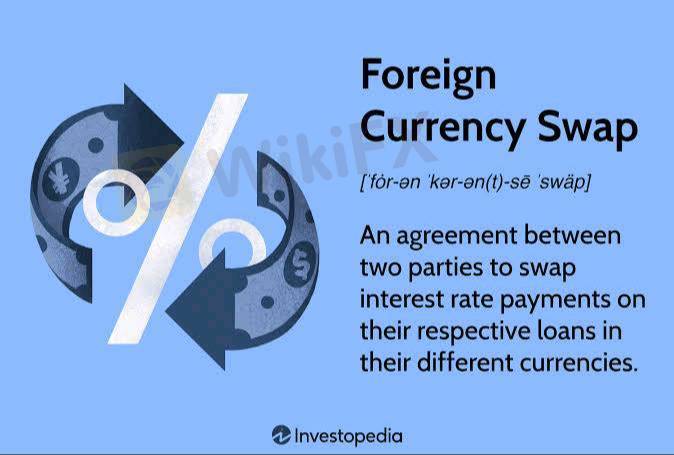
2025-02-17 21:57
A l'instar de l'industrie How to use forex swaps to reduce risk.
#forexrisktip
A forex swap is a contract where two parties agree to exchange currencies at a specific rate on a future date. It's like a forward contract, but with an added element of exchanging interest payments in the two currencies.
How it works
* Agreement: Two parties agree to exchange currencies at a future date (the "forward date") at a predetermined exchange rate (the "forward rate").
* Initial Exchange: The parties exchange currencies at the current exchange rate (the "spot rate").
* Interest Payments: During the swap period, each party makes interest payments to the other in the currency they received. The interest rates are agreed upon at the start of the swap.
* Final Exchange: On the forward date, the parties exchange currencies again, this time at the agreed-upon forward rate.
How it reduces risk
* Exchange Rate Risk: By locking in the exchange rate for a future transaction, a forex swap eliminates the risk of unfavorable exchange rate movements. This is especially useful for businesses that need to make or receive payments in a foreign currency.
* Interest Rate Risk: By agreeing on fixed interest rates for the swap period, a forex swap can protect against changes in interest rates. This is beneficial for businesses that have loans or investments in foreign currencies.
Example
Imagine a US company needs to pay a supplier in Euros in 3 months. They can enter into a forex swap with a bank where they agree to:
* Exchange dollars for euros at the current spot rate.
* Make interest payments to the bank in dollars.
* Receive interest payments from the bank in euros.
* Exchange euros back for dollars in 3 months at a predetermined forward rate.
This swap allows the company to lock in the cost of their euro payment and protect themselves from exchange rate fluctuations.
Additional considerations
* Forex swaps are complex financial instruments and should be used with caution.
* It's important to understand the terms of the swap agreement, including the exchange rates, interest rates, and maturity date.
* Forex swaps involve counterparty risk, which is the risk that the other party will default on their obligations.
* It's advisable to seek professional advice before entering into a forex swap.
Disclaimer: I am an AI chatbot and cannot provide financial advice. The information provided above is for educational purposes only.
J'aime 0
FX5789672202
Trader
Discussions recherchées
A l'instar de l'industrie
WikiFX recrute: Un(e) spécialiste e-marketing Forex à temps partiel
A l'instar de l'industrie
Tirages au sort WikiFX - Tentez votre chance pour gagner un crédit d’appel !
A l'instar de l'industrie
WikiFX recrute un(e) spécialiste marketing
A l'instar de l'industrie
Chemin à la fortune : Indications de l'activité Airdrop WikiBit
Analyse de marché
construction
A l'instar de l'industrie
Route à la Fortune : Indications de l'activité Airdrop Spécial WikiBit
Catégorisation des marchés

Plateformes

Signalement

Agents

Recrutement

EA

A l'instar de l'industrie

Marché

Indicateur
How to use forex swaps to reduce risk.
 Inde | 2025-02-17 21:57
Inde | 2025-02-17 21:57#forexrisktip
A forex swap is a contract where two parties agree to exchange currencies at a specific rate on a future date. It's like a forward contract, but with an added element of exchanging interest payments in the two currencies.
How it works
* Agreement: Two parties agree to exchange currencies at a future date (the "forward date") at a predetermined exchange rate (the "forward rate").
* Initial Exchange: The parties exchange currencies at the current exchange rate (the "spot rate").
* Interest Payments: During the swap period, each party makes interest payments to the other in the currency they received. The interest rates are agreed upon at the start of the swap.
* Final Exchange: On the forward date, the parties exchange currencies again, this time at the agreed-upon forward rate.
How it reduces risk
* Exchange Rate Risk: By locking in the exchange rate for a future transaction, a forex swap eliminates the risk of unfavorable exchange rate movements. This is especially useful for businesses that need to make or receive payments in a foreign currency.
* Interest Rate Risk: By agreeing on fixed interest rates for the swap period, a forex swap can protect against changes in interest rates. This is beneficial for businesses that have loans or investments in foreign currencies.
Example
Imagine a US company needs to pay a supplier in Euros in 3 months. They can enter into a forex swap with a bank where they agree to:
* Exchange dollars for euros at the current spot rate.
* Make interest payments to the bank in dollars.
* Receive interest payments from the bank in euros.
* Exchange euros back for dollars in 3 months at a predetermined forward rate.
This swap allows the company to lock in the cost of their euro payment and protect themselves from exchange rate fluctuations.
Additional considerations
* Forex swaps are complex financial instruments and should be used with caution.
* It's important to understand the terms of the swap agreement, including the exchange rates, interest rates, and maturity date.
* Forex swaps involve counterparty risk, which is the risk that the other party will default on their obligations.
* It's advisable to seek professional advice before entering into a forex swap.
Disclaimer: I am an AI chatbot and cannot provide financial advice. The information provided above is for educational purposes only.
J'aime 0
Je veux faire un commentaire aussi.
Poser une question
0commentaires

Aucun commentaire pour l'instant. Soyez le premier de faire un commentaire !

Poser une question
Aucun commentaire pour l'instant. Soyez le premier de faire un commentaire !